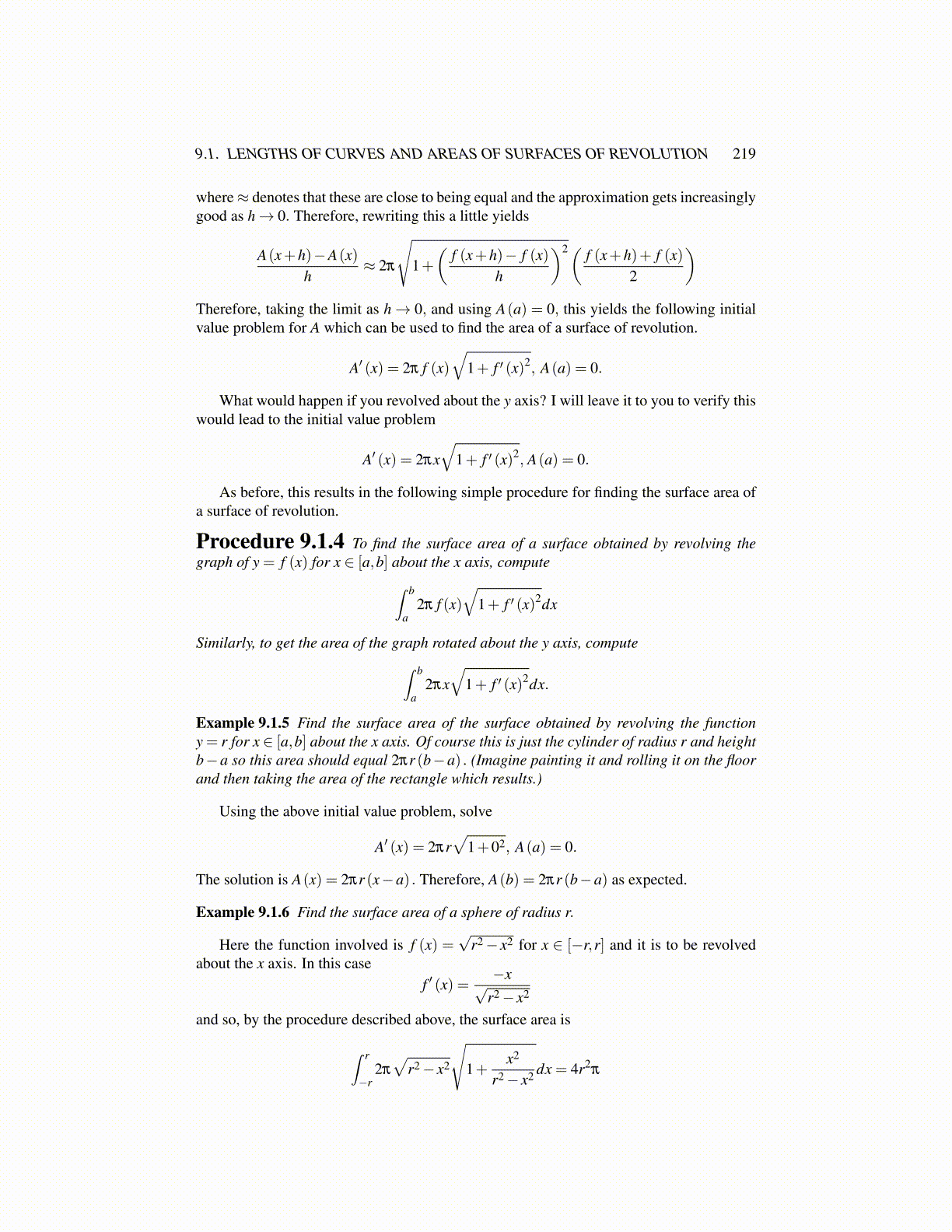
9.1. LENGTHS OF CURVES AND AREAS OF SURFACES OF REVOLUTION 219
where ≈ denotes that these are close to being equal and the approximation gets increasinglygood as h → 0. Therefore, rewriting this a little yields
A(x+h)−A(x)h
≈ 2π
√1+(
f (x+h)− f (x)h
)2( f (x+h)+ f (x)2
)Therefore, taking the limit as h → 0, and using A(a) = 0, this yields the following initialvalue problem for A which can be used to find the area of a surface of revolution.
A′ (x) = 2π f (x)√
1+ f ′ (x)2, A(a) = 0.
What would happen if you revolved about the y axis? I will leave it to you to verify thiswould lead to the initial value problem
A′ (x) = 2πx√
1+ f ′ (x)2, A(a) = 0.
As before, this results in the following simple procedure for finding the surface area ofa surface of revolution.
Procedure 9.1.4 To find the surface area of a surface obtained by revolving thegraph of y = f (x) for x ∈ [a,b] about the x axis, compute∫ b
a2π f (x)
√1+ f ′ (x)2dx
Similarly, to get the area of the graph rotated about the y axis, compute∫ b
a2πx√
1+ f ′ (x)2dx.
Example 9.1.5 Find the surface area of the surface obtained by revolving the functiony = r for x ∈ [a,b] about the x axis. Of course this is just the cylinder of radius r and heightb−a so this area should equal 2πr (b−a) . (Imagine painting it and rolling it on the floorand then taking the area of the rectangle which results.)
Using the above initial value problem, solve
A′ (x) = 2πr√
1+02, A(a) = 0.
The solution is A(x) = 2πr (x−a) . Therefore, A(b) = 2πr (b−a) as expected.
Example 9.1.6 Find the surface area of a sphere of radius r.
Here the function involved is f (x) =√
r2 − x2 for x ∈ [−r,r] and it is to be revolvedabout the x axis. In this case
f ′ (x) =−x√
r2 − x2
and so, by the procedure described above, the surface area is
∫ r
−r2π
√r2 − x2
√1+
x2
r2 − x2 dx = 4r2π